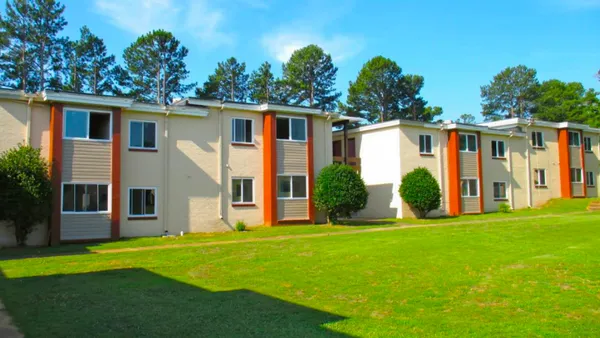Second quarter earnings were a mixed bag for Essex Property Trust.
On one hand, its Northern California and Seattle markets showed strength, buoyed by momentum in the tech sector. However, in Southern California, COVID-19-era eviction moratoriums and general economic softness related to the national economic picture muted growth.
“We’ve all experienced a lot of the noise with public policy and the lack of clarity there. And so I do think companies have been more reticent in hiring and investing, which of course impacts our overall growth,” CEO Angela Kleiman said on the REIT’s earnings call in late July.
Unlike the other major apartment REITs, Essex’s portfolio is exclusively located on the West Coast, which insulates it from some of the concerns faced by national Sun Belt-focused REITs.
“In the end, ESS' 2Q25 results may not look that bad when the rest of the group's results are in, given DC job/demand risk and Sun Belt peers facing supply headwinds,” wrote Haendel St. Juste, managing director of REITs for investment bank Mizuho Securities, in a note shared with Multifamily Dive.
Here is a look at the regional trends affecting Essex’s performance.
LA issues
The laws of supply and demand would dictate that apartment owners should have seen a boost in occupancy rates in Q2 after fires ravaged homes in Southern California last January.
“We didn't expect LA to just suddenly take off,” Kleiman said. “But we did expect that on the occupancy side it would run a little tighter, which is what we had forecasted. And what we are experiencing is that overall macroeconomy softness.”
However, that’s not what happened in Q2 for Essex, as net operating income only grew 0.5% from the first quarter. Kleiman said that “overall macro economy softness,” and the lingering effects of eviction moratoriums hampered its performance in Southern California, which constitutes 40% of its portfolio, in the first half of the year..
“We're five years since COVID,” Kleiman said. “That was 2020, but LA was shut down for three years. The eviction moratorium lasted three years. So we're only in the back half of the second year of this recovery.”
Apartment supply was also a challenge in the first half for Essex, along with softening demand. “The soft demand environment is actually not just in Los Angeles,” Kleiman said. “It's in Southern California as a whole. And I just want to remind everyone that Southern California mirrors the U.S. economy, and the U.S. economy has been soft.”
Even with the lingering problems in Southern California, Kleiman sees declining supply and incoming capital expenditures boosting the region’s rental market.
“There is a lot going for LA,” Kleiman said. “It is the largest economy by county, with over $1 trillion of GDP, and the infrastructure investment that's earmarked for LA for the World Cup and the Olympics … is over $80 billion.”
Northern region strength
Fortunately for Essex, 60% of its portfolio lies in its northern West Coast regions, including the Bay Area in California and Seattle.
“We have seen a steady demand in Northern California and Seattle, and we've not seen any softness … whether it's traffic or otherwise,” Kleiman said.
The sharp decline in rents that occurred during and directly after the pandemic is also benefiting Essex.
“Especially in Northern California, we are still sitting in one of the best affordability positions that we have been in for the history of the company, because rents are just starting to recover and income has grown consistently over the past five years,” Kleiman said.
Essex’s CEO also credits burgeoning job demand in technology and artificial intelligence as a driver for its performance in Northern California, where sequential NOI grew 2% in Q2.
BY THE NUMBERS
| Category | Q2 | YOY Change |
| Revenue | $410.9 million | 3.2% |
| Net operating income | $290.9 million | 3.3% |
| Operating expenses | $120.1 million | 2.9% |
| Funds from operations | $4.03 | 3.6% |
| Average rent | $2,690 | 2.4% |
| Occupancy rate | 96.2% | 0 bps |
SOURCE: Essex
“We track the job openings of the top 20 technology companies, and we have seen not an acceleration, but just a gradual, steady increase,” Kleiman said.
In Seattle, demand remains steady, and sequential NOI increased by 8.5%. “It's a higher supply market,” Kleiman said. “Therefore, the demand is more influenced by the supply landscape than anything else. And what we're seeing is the demand pressure to shift in the second half, to our favor.”
Click here to sign up to receive multifamily and apartment news like this article in your inbox every weekday.








